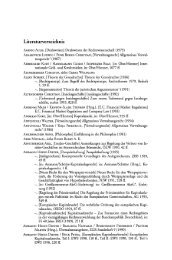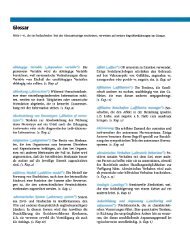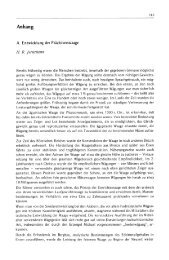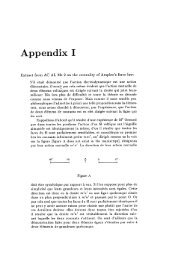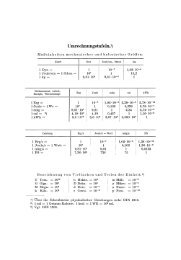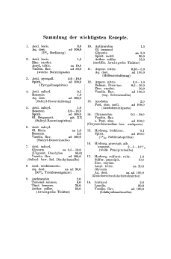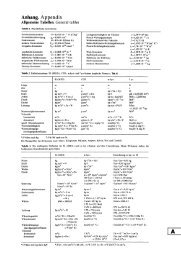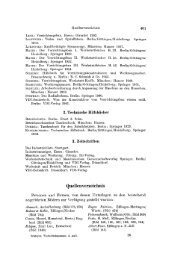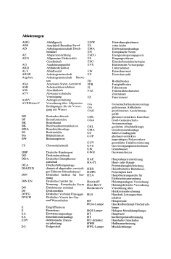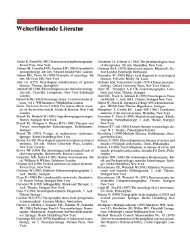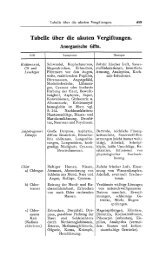Download PDF - Springer
Download PDF - Springer
Download PDF - Springer
You also want an ePaper? Increase the reach of your titles
YUMPU automatically turns print PDFs into web optimized ePapers that Google loves.
Environ Health Prev Med (2013) 18:185–197 193exposure to mixtures of EDCs in early life can influencethe development of obesity and T2D.NCDs are preventable, but new initiatives are needed toinstitute prevention. If the risk of many common diseasesof adulthood in our communities is largely determinedbefore birth, adult lifestyle interventions will only reducethe risk transiently or to a small degree because they occurtoo late. Thus, from a public health perspective, it isimportant to determine whether interventions after theneonatal period can reverse the adverse effects of unbalancedprenatal nutrition. If the effects of adult lifestyleinterventions are limited, maximum effect will be gainedfrom timely interventions in early life. Improved nutritionwill not only benefit the present population but may alsoreduce disease in future generations. If so, more careshould be given to the consumption of a healthy diet duringpregnancy and improved fetal nutrient availability, whichmay lead to a more normal birth weight and early lifegrowth, thereby reducing the risk for programmed metabolicdisease. Clear evidence and good communication ofthis evidence may lead to policy responses that will openthe possibility of nutritional or pharmacological interventionsto combat the rapid rise in obesity and T2D.Acknowledgments The author thanks two anonymous reviewerswhose comments and suggestions greatly improved this review.Conflict of interestNone.Open Access This article is distributed under the terms of theCreative Commons Attribution License which permits any use, distribution,and reproduction in any medium, provided the originalauthor(s) and the source are credited.References1. Zimmet P, Alberti KG, Shaw J. Global and societal implicationsof the diabetes epidemic. Nature. 2001;414:782–7.2. Finucane MM, Stevens GA, Cowan MJ, Danaei G, Lin JK,Paciorek CJ, et al. National, regional, and global trends in bodymassindex since 1980: systematic analysis of health examinationsurveys and epidemiological studies with 960 country-yearsand 9.1 million participants. Lancet. 2011;377:557–67.3. Alexander CM, Landsman PB, Teutsch SM, Haffner SM.NCEP-defined metabolic syndrome, diabetes, and prevalence ofcoronary heart disease among NHANES III participants age50 years and older. Diabetes. 2003;52:1210–4.4. Gluckman PD, Hanson MA, Cooper C, Thornburg KL. Effect ofin utero and early-life conditions on adult health and disease.N Engl J Med. 2008;359:61–73.5. Godfrey KM, Barker DJ. Fetal programming and adult health.Public Health Nutr. 2001;4:611–24.6. Ravelli GP, Stein ZA, Susser MW. Obesity in young men afterfamine exposure in utero and early infancy. N Engl J Med.1976;295:349–53.7. Hofman PL, Regan F, Jackson WE, Jefferies C, Knight DB,Robinson EM, et al. Premature birth and later insulin resistance.N Engl J Med. 2004;351:2179–86.8. Gluckman PD, Hanson MA, editors. Developmental origins ofhealth and disease. Cambridge: Cambridge University Press;2006.9. Huxley R, Neil A, Collins R. Unravelling the fetal originshypothesis: is there really an inverse association betweenbirthweight and subsequent blood pressure? Lancet. 2002;360:659–65.10. Newsome CA, Shiell AW, Fall CH, Phillips DI, Shier R, LawCM. Is birth weight related to later glucose and insulin metabolism?—asystematic review. Diabet Med. 2003;20:339–48.11. Huxley R, Owen CG, Whincup PH, Cook DG, Colman S,Collins R. Birth weight and subsequent cholesterol levels:exploration of the ‘‘fetal origins’’ hypothesis. JAMA. 2004;292:2755–64.12. Gluckman PD, Hanson MA. Living with the past: evolution,development, and patterns of disease. Science. 2004;305:1733–6.13. Barker DJ, Osmond C. Infant mortality, childhood nutrition, andischemic heart disease in England and Wales. Lancet. 1986;1:1077–81.14. Barker DJ, Winter PD, Osmond C, Margetts B, Simmonds SJ.Weight in infancy and death from ischemic heart disease.Lancet. 1989;2:577–80.15. Hales CN, Barker DJ. Type 2 (non-insulin-dependent) diabetesmellitus: the thrifty phenotype hypothesis. Diabetologia.1992;35:595–601.16. Barker DJ, Gluckman PD, Godfrey KM, Harding JE, Owens JA,Robinson JS. Fetal nutrition and cardiovascular disease in adultlife. Lancet. 1993;341:938–41.17. Barker DJ, Hales CN, Fall CH, Osmond C, Phipps K, Clark PM.Type 2 (non-insulin-dependent) diabetes mellitus, hypertensionand hyperlipidaemia (syndrome X): relation to reduced fetalgrowth. Diabetologia. 1993;36:62–7.18. Phillips DI, Barker DJ, Hales CN, Hirst S, Osmond C. Thinnessat birth and insulin resistance in adult life. Diabetologia.1994;37:150–4.19. Frankel S, Elwood P, Sweetnam P, Yarnell J, Smith GD.Birthweight, body-mass index in middle age, and incident coronaryheart disease. Lancet. 1996;348:1478–80.20. Stein CE, Fall CH, Kumaran K, Osmond C, Cox V, Barker DJ.Fetal growth and coronary heart disease in south India. Lancet.1996;48:1269–73.21. Benyshek DC, Martin JF, Johnston CS. A reconsideration of theorigins of the type 2 diabetes epidemic among Native Americansand the implications for intervention policy. Med Anthropol.2001;20:25–64.22. Kajantie E, Osmond C, Barker DJ, Forsen T, Phillips DI, ErikssonJG. Size at birth as a predictor of mortality in adulthood: afollow-up of 350000 person-years. Int J Epidemiol.2005;34:655–63.23. Leon DA, Lithell HO, Vagero D, Koupilova I, Mohsen R,Berglund L, et al. Reduced fetal growth rate and increased riskof death from ischemic heart disease: cohort study of 15000Swedish men and women born 1915–29. Br Med J.1998;317:241–5.24. Slomko H, Heo HJ, Einstein FH. Epigenetics of obesity anddiabetes in humans. Endocrinology. 2012;153:1025–30.25. Lumey LH, Stein AD, Kahn HS, van der Pal-de Bruin KM,Blauw GJ, Zybert PA, et al. Cohort profile: the Dutch HungerWinter families study. Int J Epidemiol. 2007;36:1196–204.26. Ravelli AC, van der Meulen JH, Osmond C, Barker DJ, BlekerOP. Obesity at the age of 50 y in men and women exposed tofamine prenatally. Am J Clin Nutr. 1999;70:811–6.27. Roseboom TJ, van der Meulen JH, Ravelli AC, Osmond C,Barker DJ, Bleker OP. Perceived health of adults after prenatalexposure the Dutch famine. Paediatr Perinat Epidemiol.2003;17:391–7.123



